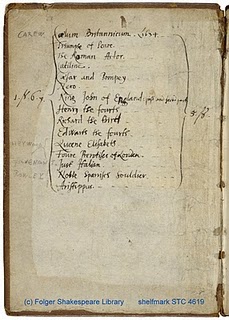In my last post wondering about important book history tools developments of the last decade, I got some interesting suggestions about what else to consider. For me, they came together as part of a way of remembering how advances or shifts in technology enable different ways of studying and creating knowledge and arts. In response, I’ve been thinking about mash-ups. Peter Friedman commented on my post that a reconsideration of authorship has been developing in part as a response to new technological tools. I’m not sure I see the correlation quite like that, at least in the field of literary studies, as opposed to his field of law. But I do agree that the availability of powerful computing tools to shape and reshape preexisting creations does reshape notions of authorship as individual ownership. EMI’s anger over Danger Mouse’s Grey Album (the 2004 mash-up of the the Beatles’s White Album and Jay-Z’s The Black Album) certainly tells us a lot about the complications in controlling what can be done and not done in the name of owning art (it also says a lot about the fine mess the record industry is in these days).
But the growing interest in and the plethora of music and video mash-ups speaks to me more as being about how the availability of technology deeply affects (and effects) our responses to art. We can talk all we want about how something like dj erb‘s Hollaback Girl of Constant Sorrow reflects a post-modern (or is that post-post-modern?) notion of authorship and female sexuality and the American past, but what strikes me is how technology makes possible new expressions of creativity and their distribution. Without recording technology that separates instrumental and vocal tracks and without the availability of computers to remix those tracks with other tracks unintended by the first creators, none of this would be possible. The tools that enabled artists to create their music also enables listeners to turn into artists, modifying that music in ways that honor it, subvert it, and most of all make it our own.
Now what, exactly, does this have to do with early modern books? We have all, I think, started to at least pay lip service to the notion that all early modern plays were collaborative efforts, drawing on the talents and influences of (often) multiple playwrights, players, and company sharers. (Even Shakespeare collaborated! Shh, don’t tell Harold Bloom!) We are also, I hope, increasingly aware that all printed works were also collaborations, shaped by writers, publishers, and printers. But I also believe that all printed works were also collaborations with their readers. This isn’t just a belief in response response theory. It’s a belief that the users of books reshaped them as they needed to, sometimes literally. As Jeffrey Todd Knight makes clear in his recent–and excellent–article in the Fall 2009 issue of Shakespeare Quarterly, early readers of Shakespeare’s plays and poems combined them with other printed works to create self-shaped anthologies. Part of Knight’s point is that early modern readers bound works together in ways that suggest contexts and connections that have now been lost to us, as later collectors ruthlessly prioritized Shakespeare over other writers and disbound such groupings in order to rebind Shakespeare as a solitary work. It’s an important recognition for those of us interested in early printed books and in the histories they accrue in the hands of collectors and libraries. Shakespeare was not separate from his contemporaries, but part and parcel.
One thing that I take away from Knight is that such context been lost. So, too, has the sense that books are made by their users. We might want to think of these gatherings as early mash-ups: books that readers remade into their own books. The technology of printed books allows for such mash-ups. Books can be joined together because they are (particularly smaller formats) sold unbound, requiring their owners to choose whether or not to have them bound and how to have them bound. The comparatively cheap cost of printed books, as opposed to manuscripts, meant that there were enough being sold and bought that such collections proliferated.
The image at the top of this post is a manuscript listing of the contents of such a collection (catalog record; zoomable image). It identifies fifteen plays and entertainments, including works by Carew, Chapman, Heywood, Jonson, and Shakespeare. Knight discusses it in his article, along with a number of other examples. (You can read the abstract of his essay; if you have access to Project MUSE, you can read the article itself online.) If you’d like to read some other musings along these lines, Whitney Trettien has a series of posts on cut-ups at diapsalmata that think not only about early modern instances, but about modern cut-ups as well.
Since I started off with my look back at the last year, I leave you with this: DJ Earworm’s mash-up of the United State of Pop 2009. Enjoy!

>This is terrific. Thanks. Your discussion reminds me of a couple of things. First, of course, the personal "mashup" known as the the "commonplace book." Second, yes, you're absolutely right about the distortions resulting from our loss of context. Again, I'm not trying to promote myself, but rather, to emphasize my gratitude at finding someone with similar thoughts, but you might be interested in what I wrote about my former colleague Fumi Arewa's article about Robert Johnson and the loss of his context as the reason for his post-'60s reputation as a lone genius: http://tiny.cc/LxTCa